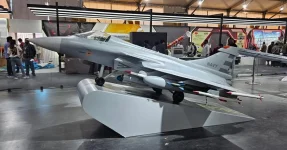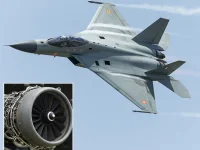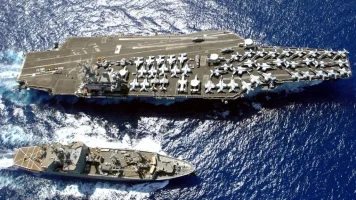- Views: 4K
- Replies: 16
In a significant move towards technological self-reliance, India's Ministry of Defence has formally recommended a partnership with French aerospace leader Safran to jointly develop a new generation of fighter jet engines.
This landmark decision is a major step forward for one of India's most ambitious defence manufacturing projects, aiming to equip its future fleet of combat aircraft with domestically produced power plants.
The recommendation follows a thorough evaluation process conducted by expert technical committees and stakeholders from the Indian aerospace industry. Proposals from international engine manufacturers, including the UK’s Rolls-Royce, were carefully considered.
Ultimately, the French offer was deemed more advantageous, primarily due to its commitment to a complete transfer of technology (ToT). This transfer is crucial as it includes the critical design philosophies and manufacturing processes that have so far been mastered by only a handful of nations worldwide.
The project, valued at an estimated ₹61,000 crore, will focus on the co-development of a powerful 120 kilonewton (kN) thrust class engine. This new engine is specifically intended to power India's futuristic fifth-generation stealth fighter, the Advanced Medium Combat Aircraft (AMCA).
The collaboration with Safran, which manufactures the M88 engines for the Rafale jets already in service with the Indian Air Force, is seen as a strategic alignment that builds upon an existing defence relationship.
According to the development timeline for the AMCA programme, the first prototypes are expected to roll out by 2026-27, with a maiden flight targeted for 2028.
While the new Indo-French engine is under development, the initial prototypes and early production models of the AMCA will likely be powered by the American-made GE Aerospace F414 engine to avoid delays.
The parallel development strategy ensures the aircraft program progresses while the core engine technology is being indigenised. Over the coming decades, India anticipates a requirement for over 250 of these advanced engines for its planned AMCA squadrons.
This initiative is driven by the government's long-term vision, championed by Defence Minister Rajnath Singh, to establish a robust indigenous design and manufacturing ecosystem for critical defence technologies. For decades, India's fighter jets have relied exclusively on foreign-origin engines.
Previous attempts to develop a domestic engine, such as the Kaveri project by the Gas Turbine Research Establishment (GTRE), did not produce the required thrust for modern fighter aircraft, although a derivative is now being successfully adapted to power unmanned combat aerial vehicles.
This new partnership with France aims to overcome past hurdles and establish India as a key player in global aviation propulsion engineering.



